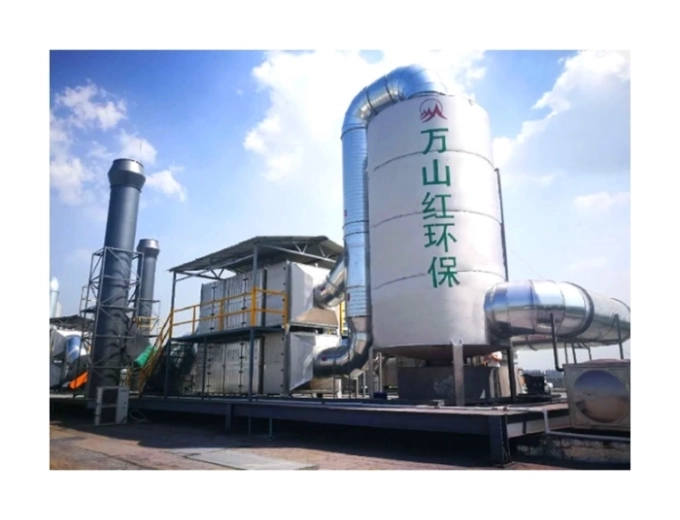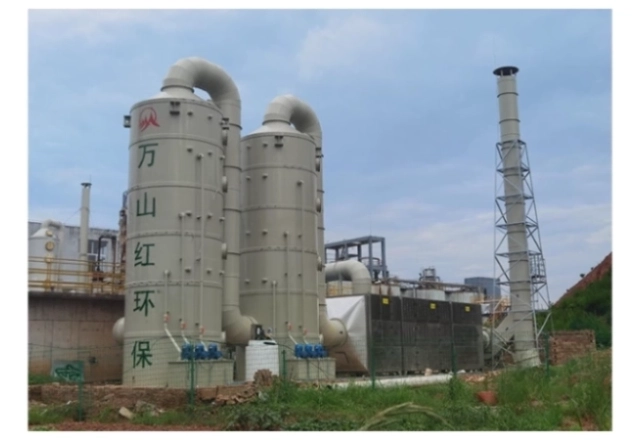Dust Collectors Types and Applications
Release time: 2025-06-21
In industrial production, air pollution has become an increasingly serious environmental problem. In order to reduce the impact of harmful substances on the environment and human health, dust collectors, as an environmental protection equipment, have become one of the indispensable facilities in many industries. The function of the dust collector is to remove harmful substances such as dust and smoke generated in the production process from the air, thereby ensuring the safety and health of workers and reducing environmental pollution. Today, Wanshanhong Environmental Protection will take you to understand the types of dust collector environmental protection equipment on the market and their application characteristics.
Bag dust collector
Bag dust collector is currently the most widely used dust removal equipment, especially in cement, metallurgy, electricity and other industries. Its working principle is to filter out dust in the airflow through layers of filter bags. These filter bags are usually made of materials such as polyester, polypropylene, and polyester, and can effectively capture dust with smaller particle sizes. The advantages of bag dust collectors are high filtration efficiency, wide application range, and can adapt to complex working environments such as high temperature and high humidity.
Bag dust collectors have a significant advantage in daily applications: they can perform efficient dust removal at lower airflow speeds. This makes it irreplaceable in some demanding industries, such as the pharmaceutical industry and the chemical industry.
Electrostatic precipitator
An electrostatic precipitator is a device that uses high voltage to ionize dust particles in the airflow and then adsorbs the dust particles on the dust collecting electrode through an electric field. Its main feature is that it can work under large airflow and high dust concentration. Electrostatic precipitators are often used in large-scale industrial production such as electricity, metallurgy, and fertilizer. Because it can handle large airflow and has relatively low maintenance costs, it is widely used in flue gas treatment and air pollution control.
The working efficiency of the electrostatic precipitator is affected by factors such as the electric field strength and airflow velocity, and it is particularly prominent in dusty environments. However, since it has a poor capture effect on certain types of fine particles, it often needs to be used in conjunction with other types of dust removal equipment in some dust removal tasks that require high precision.
Wet dust collector
Wet dust collectors mainly use water vapor or water spray to moisten the dust particles in the airflow, thereby achieving the effect of removal. This type of dust collector is suitable for handling airflow with high humidity, especially for handling dust containing combustible, toxic and other dangerous gases. The advantage of wet dust collector is that in addition to being able to effectively remove dust in the air, it can also remove some harmful substances in the gas.
Wet dust collectors are widely used in industries such as metallurgy, coal mining, and steel. Especially in high-risk places where fire or explosion is prone to occur, wet dust collectors are often the preferred equipment.
Cyclone dust collector
Cyclone dust collector is a dust removal equipment that uses the principle of centrifugal force to separate dust from gas through rotating airflow. The cyclone dust collector has a simple structure, easy maintenance, and low cost. It is especially suitable for working conditions with high dust concentration. It is commonly used in industries such as coal, limestone, and building materials. The working principle of the cyclone dust collector is to allow the airflow to enter the cylindrical body, generate a rotating airflow, and throw the heavier dust particles to the outer wall through the centrifugal force, and then discharge them through the dust outlet at the bottom.
Although the dust removal effect of cyclone dust collector is relatively poor, especially the filtering capacity for fine dust is limited, it still has good performance in most medium and low concentration dust sources, especially in environments that need to handle large amounts of air.
Labyrinth dust collector
The labyrinth dust collector adopts a multi-structured labyrinth filtration system. By constantly changing the airflow path, the dust particles collide with the water vapor in the airflow and finally settle. This dust collector is suitable for high temperature and high humidity environments, especially in casting, steel smelting and other industries. The design of the labyrinth dust collector can effectively capture larger particle sizes and improve the dust removal efficiency through cooling and wetting processes.
Conclusion
Whether it is a bag dust collector, an electrostatic precipitator, a wet dust collector, a cyclone dust collector or a labyrinth dust collector, they are widely used in different industrial fields. Dust collector equipment is also constantly innovating and improving to meet different production needs. For enterprises, choosing a suitable dust collector can not only improve production efficiency, but also reduce the negative impact on the environment, thereby contributing to the sustainable development of the enterprise.



